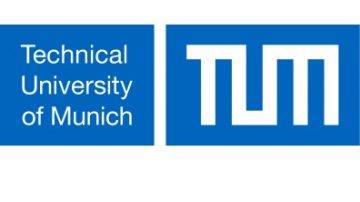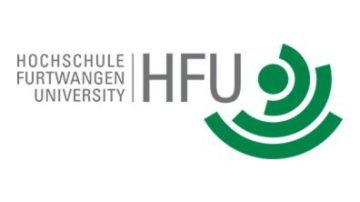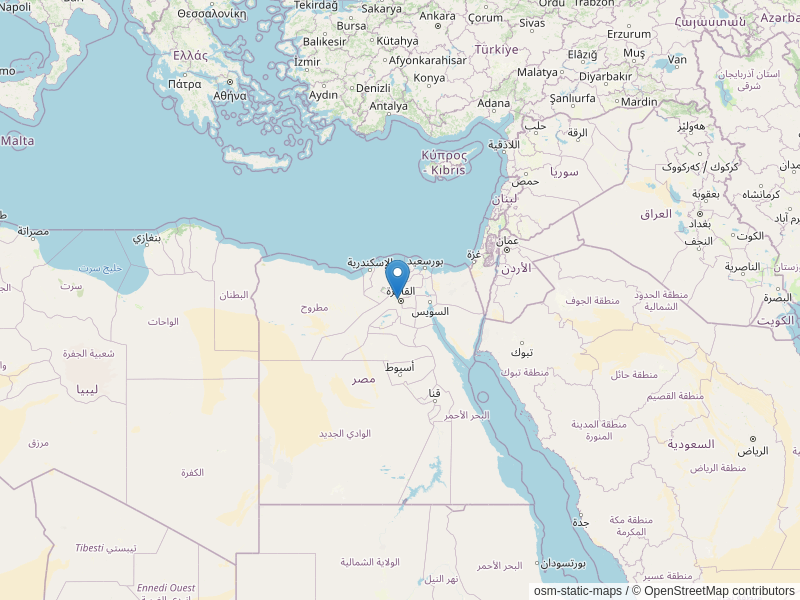Discovery of a 4500 years Hidden Corridor in the Great Pyramid using Nondestructive Techniques

The workshop brought together prominent researchers and scientists from Egypt, specializing in engineering and cultural heritage. The primary objective was to foster scientific collaboration between networks of researchers and universities in Germany and the MENA region. The focus was on illuminating the application of Non-Destructive Testing (NDT) in the “ScanPyramids” project, providing a comprehensive overview of the discovery’s key aspects.
Dr Carsten-Michael Walbiner, Director of the DAAD Regional Office Cairo started by outlining that “six months ago, we had another event that was the handing over of the directorship of the DAAD’s office from my predecessor to me and at that event, the project was mentioned several times by speakers from Germany”, and tonight’s event served as a reflection on the progress made since then. The significance of the COSIMENA project, a collaborative effort fostering scientific innovation in the Middle East and North Africa, was highlighted through speeches and mentions by speakers from Germany during the previous event.
Dr Carsten-Michael Walbiner expressed his enthusiasm for the innovative use of technical methods in uncovering new chambers within the pyramids. He highlighted the international and interdisciplinary nature of the project, bringing together experts from various fields to explore the mysteries concealed within the pyramids.
“The pyramids are always truly international and innovative in terms of using technology to discover new chambers, bringing together scientists and experts from all over the world and from diverse disciplines,” DrWalbiner elaborated, expressing his immense happiness to have members of “ScanPyramids” team at the DAAD Regional Office Cairo.
Ms. Lorena Mohr, Head of Science and Protocol at the Embassy of the Federal Republic of Germany in Cairo, commended the collaboration between German and Egyptian entities. She described the event as headline-worthy, expressing her fascination with Egypt’s monuments, particularly the pyramids.
Ms. Mohr emphasized the spirit of teamwork and the interdisciplinary approach that was evident throughout the project. “From this mission, I felt the spirit of the team with everyone working together and enjoying this,” she added.
Prof. Dr Hany Helal, a Professor of Rock Mechanics and Engineering Geology at Cairo University, thanked the DAAD for the invitation and discussed the integrated approach taken in the research. He explained the challenges of understanding how the Great Pyramid was built, debunking assumptions about traditional construction methods and emphasizing the need for an integrated, cross-disciplinary approach.
“It is important to show the audience more than one face,” Prof. Dr Hany illustrated. He explained the long history of working with an integrated approach in the faculty of engineering where they have a center for non-destructive techniques. “When we started working in 1992, experts of each discipline were confined in their field such as engineers, archaeologists, Egyptologists, and geologists. Afterwards, we managed to develop an integrated approach of working interconnectedly.”
Speaking of the uncovering of more and more mysteries about the pyramids, Prof. Dr Hany said: “What we know till now is not sufficient to assume how the pyramid was built. Some still assume that it was built using a ramp. However, this cannot be argued to be true given the case of Luxor Pylon”.
Prof. Dr Christian Grosse, Chair of Nondestructive Testing at the Technical University of Munich, Germany, provided insights into the ScanPyramids project. He detailed the six non-invasive and non-destructive techniques employed, including 3D architectural models, infrared thermography, muography, ground-penetrating radar, ultrasound testing, and electric resistivity tomography.
Prof. Dr Grosse added that the exploration involved the creation of 3D architectural models and digital simulations, encompassing the construction’s materials and shape. This process included registering measured profiles and device locations, assessing the impact on the number of muons passing through, and establishing boundary conditions for radar, ultrasound, and electric resistivity tomography (ERT). “This process aimed at determining optimal sensor placements, identifying the most effective frequencies, and specifying required wavelengths for enhanced accuracy and efficiency in the exploration process,” he added.
Infrared Thermography was also used, where every object emits thermal radiation and absorbs heat from its surroundings above absolute zero (0 Kelvin = -273.15 °C), according to Prof. Dr. Christian. Thermal radiation behaves similarly to visible light, involving refraction, diffraction, and reflection as electromagnetic waves.
Prof. Dr Grosse mentioned that Muography, employing particles produced by cosmic rays at approximately the speed of light, demonstrated that muons continuously pass through objects harmlessly, with absorption increasing in denser materials. “The technique’s accuracy was limited but was notably first employed by Nobel laureate Luis Alvarez to investigate the pyramid of Chephren, using various detection technologies,” he elaborated.
In addition, he illustrated that the Ground Penetrating Radar (GPR) involved a single measurement with an antenna emitting electromagnetic pulses for detecting reflected signals. Scanning included multi-point measurements along a straight line (radargram), with evaluation transforming scans or sections of travel time into distances and shapes, emphasizing the need for different antennas than ultrasound for high resolution, albeit requiring more time. Ultrasound, another method, was employed for non-destructive testing of objects. Electric Resistivity Tomography (ERT) utilised sheet electrodes for exploration purposes.
Assist. Prof. Mohamed Mohy Elkarmoty, Deputy Coordinator of the ScanPyramids Project, UNESCO Co-Chairholder on Science and Technology for Cultural Heritage at Cairo University started with the intriguing question of why so many chevrons were used to protect a relatively small area, a question that led to the revelation of the North Face Corridor. He stated that “Chevrons are not just in the Chevron’s north face but in several locations inside the pyramid”. He explained that the utilization of non-destructive techniques, such as 3D construction experiments, thermography, and emulsion plates, allowed the research team to uncover the existence of a hidden corridor within the Great Pyramid.
Assist. Prof. Elkarmoty explained that the investigation involved the use of emulsion plates and films, strategically placed in the Descending Corridor, revealing thermal radiation anomalies that sparked further exploration. The realization that the chevron blocks served a mechanical purpose in minimizing pressure over a specified volume fueled the team’s curiosity.
Subsequently, he stated that in order to achieve a more precise understanding of the North Face Corridor, the researchers implemented a multi-technique approach. Collaborating with Nagoya University and CEA, telescopes and additional emulsion plates were employed, ultimately leading to the identification of a corridor-shaped structure with dimensions of 9 meters in length and a cross-sectional area of 2 meters by 2 meters. His presentation elaborated on the importance of utilizing multiple non-destructive techniques for a comprehensive understanding of the hidden corridor. The collaboration and research findings were summarized in a paper published in the Nature Communications Journal in 2023 titled “Precise characterization of a corridor-shaped structure in Khufu’s Pyramid by observation of cosmic-ray muons”.
Dr Olga Popovych, a Postdoctoral Researcher and Chair of Nondestructive Testing at the Technical University of Munich, Germany, shared her insights as a member of the team that played a key role in the discovery of the hidden corridor within the Great Pyramid. Reflecting on her experience, Dr Popovych expressed pride in her involvement and highlighted the significant role of ultrasound measurements in uncovering this historical anomaly.Dr Popovych provided an overview of the ultrasound team’s efforts, outlining the challenges faced during the measurement campaigns. She explained the unique nature of ultrasound measurements, particularly the initial skepticism based on her background in studying metal pipes where ultrasound propagation through the air is deemed improbable.
The intricacies of handling the ultrasound devices, each weighing approximately 3 kilograms, were highlighted by Dr Popovych. The necessity of moving the device every 30 centimeters for optimal results added complexity to the task, making it a challenging yet rewarding endeavour.
Simulations were a key aspect of the ultrasound team’s methodology, with Dr Popovych explaining the challenges of simulation when initial dimensions are unknown. The team overcame this obstacle by conducting preliminary measurements, allowing them to refine their simulations and gain a deeper understanding of the anomaly’s characteristics.
Prof. Dr Thomas Schumacher, Professor and Associate Chair of Graduate Programs in Civil and Environmental Engineering at Portland State University, USA, expressed his gratitude to Prof. Dr Christian Grosse for bringing him into this esteemed project, praising the collaborative spirit of the entire team. He acknowledged the DAAD’s pivotal role in funding this international collaborative study, expressing a wish for a similar initiative in the United States.
Prof. Schumacher then tackled the concept of image fusion, which is a technique employed to merge data from various nondestructive techniques, each offering distinct insights into different aspects of the Great Pyramid.
Using horizontal profiles focused on the chevrons, Prof. Schumacher presented images obtained through ground-penetrating radar (GPR) and ultrasound. He pointed out the significance of interpreting reflectors and joints between blocks in the analysis. The process of image fusion involved intricate coding and mathematical manipulations to merge GPR and ultrasound images, resulting in a comprehensive visualization of the chevron structure.
He introduced electrical resistivity tomography as a third technique, providing information about the resistivity of the blocks and helping distinguish between air and rock. Prof. Schumacher detailed the process of fusing radar, ultrasound, and tomography images, ultimately confirming the existence of the hidden corridor through a visual representation with highlighted resistivity.
Prof. Schumacher’s presentation showed the power of image fusion in synthesizing data from multiple nondestructive techniques, providing a comprehensive understanding of the hidden corridor within the Great Pyramid.
Prof. DrHany Helal, in concluding the presentation on the ScanPyramids project, reflected on the scientific journey undertaken by himself and his colleagues. Acknowledging the complexity of the scientific explanations provided, he emphasized the team’s commitment to simplifying the information for a broader understanding.
Highlighting the dual purpose of their work, Prof. Dr. Helal highlighted that while their focus is on the Great Pyramid, their efforts also contribute significantly to advancing scientific knowledge. He expressed the team’s dedication to both the preservation of the pyramid and the pursuit of scientific excellence.
In revisiting the initial discoveries and discussions, Prof. Dr. Helal referred to the early indication from thermography, stating that the corridor’s identification presented as a square initially. However, this conflicted with the team’s understanding, rooted in their recognition of the engineering prowess of ancient Egyptians, particularly evidenced by the presence of chevrons.
Prof. Dr Helal affirmed that the team is now nearly certain about the existence and shape of the corridor within the Great Pyramid. This finalizes the extensive scientific journey undertaken by the ScanPyramids project, showcasing the successful integration of various nondestructive techniques and the collaboration of experts from around the world in uncovering the mysteries hidden within this ancient marvel. He showed the present audience their latest publication titled “Localization and shape determination of a hidden corridor in the Great Pyramid of Giza using non-destructive testing”.
Lastly, Prof. Dr Hany Helal highlighted the pivotal role of international cooperation, teamwork, effective management, and persistent dedication. He stressed that these elements form the bedrock of achievement, transcending boundaries and propelling us toward transformative advancements.
During the Q&A session, a participant raised the fundamental query of why the pyramids were constructed. Prof. Dr. Hany Helal stressed the importance of understanding the internal structure of the building, regardless of its original purpose. He urged Egyptologists to investigate and interpret the newly discovered corridor, leaving room for further exploration.
In response to another participant’s inquiry about indications of a door within the corridor, Prof. Dr Helal explained that comprehensive exploration is required before determining the presence of a door. Ongoing efforts involve advanced documentation techniques, such as endoscopy, with plans to provide a three-dimensional virtual reality experience for in-depth analysis.
The third question revolved around the existence of a map for the pyramids’ design. Prof. Dr. Hany Helal clarified that while no direct map exists, invoices and diaries from the French Institute in Paris-Savon offer insights into construction details, resource management, and logistical aspects of building the pyramids.
Regarding the possibility of technology detecting if the chamber or void contains treasures, Prof. Dr Helal humorously mentioned that their goal as engineers is not to find gold but to discover the air voids within the pyramid. The emphasis is on scientific exploration rather than searching for treasures, leaving the latter to Egyptologists.
Participants expressed gratitude for the collaborative efforts between international teams, including experts from Japan, Germany, Canada, and France. Prof. Dr Hany Helal emphasized the importance of sustained collaboration and the training of the next generation of researchers. He stressed the significance of integrating diverse teams and expressed thanks for the support received from the DAAD and the German government.
The workshop concluded with an appreciation for scientific achievements and collaborative endeavors. Prof. Dr Hany Helal expressed a keen interest in continuing exploration and collaboration, anticipating future discoveries.







